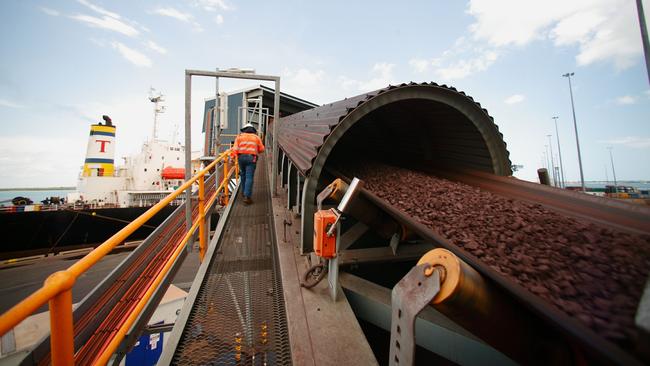
Although this election is likely to be fought on inflation, cost-of-living issues, and what the RBA will or won’t do with interest rates, this is perhaps the wrong focus.
The big underlying issue is that productivity has been dismal and national incomes on a per capita basis have been falling. This issue has little to do with monetary policy as the RBA only manages cycles in demand – it cannot boost the supply side of the economy or lift productivity.
A key challenge is that the great success Australia has enjoyed from markedly ramping up exports of iron ore, coal and gas over the past couple of decades, driven largely by demand from China, is now likely to be consigned to history.
The value of resources exports rose by an extraordinary 750 per cent over the two decades to 2023. In turn, this boosted strong nominal income growth, tax revenues, government funding, mining profitability, share prices in the resources sector, and household incomes and wealth in general.
But China seems likely to be past peak steel and, with it, so too the world. The energy transition is set to drive a shift away from coal usage. Global investment in gas capacity is occurring mostly in other countries.
The rise in national income from these sources was set to peak a few years ago, but this was delayed until 2022 by the global spike in energy prices due to the Russia-Ukraine war.
Mining profitability has now weakened, which is showing up in lower tax revenues and has helped to push the federal budget back into deficit, following two years of budget surpluses supported by high commodity prices.

As these global sources of demand no longer drive income growth, Australia needs new growth engines. And to get these engines to fire up, the nation needs be more competitive, efficient and have more skilled workers and capital available. We see three key new growth opportunities.
First, benefit more from the global energy transition. As prominent local academic Ross Garnaut points out, Australia may have a greater comparative advantage in producing renewable energy and using it to process metals than it has had in iron ore, coal and gas – the so-called “superpower” opportunity.
But to make this happen requires support from policymakers such that the incentives for investment are strong. It would be ideal if Australia could move towards having a national carbon price mechanism, which would allow the private sector to get better and more consistent price signals. But there is a risk that, as with the 2013 election, there is a marked change in policy direction on the climate agenda, creating uncertainty and discouraging investment.
Second, drive growth in services exports, particularly education. International student numbers have bounced back to above pre-pandemic highs. However, policies announced last year to cap student numbers probably sent a discouraging signal for a key export industry.
Third, support greater trade connections with the fast-growing Indian and ASEAN economies. Australia’s financial and trade linkages to these countries are currently quite small and narrow, but with large diasporas from these countries residing in Australia, people-to-people connections can perhaps be built upon to strengthen trade.
Of course, policymakers only support, rather than drive, these growth engines. The key is attracting private sector investors, both local and foreign.
To do this, investors need to be convinced that projects will return more than their hurdle rates.
Key to this is lifting productivity. The list of policy measures that could be taken to lift productivity is long, but we see three key areas: Policy that supports increased competition; reform which makes the tax system more efficient; and deregulation, including changes to the industrial relations system, which helps to boost labour supply and make the jobs market more flexible.
A productivity-enhancing reform agenda ought to be the focus in this year’s political campaigns. But proposing major change ahead of an election has not been a successful strategy in recent years, as the Labor Party saw in 2019.
Another challenge is that the crossbench could get larger at the next election, leaving either major party needing to form a minority government and potentially making it harder to pass legislation and achieve reforms.
Political and economic challenges abound. But a focus on lifting productivity is imperative, as without it, the future is likely to be less economically prosperous than the recent past.
Paul Bloxham is HSBC chief economist (Australia, New Zealand and global commodities) and managing director







It’s crunch time for policymakers in 2025. As we head towards an election that must be held by May 17, a laser-like focus is needed on what can be done to lift productivity, support new growth engines and put Australia back on track to raising living standards.